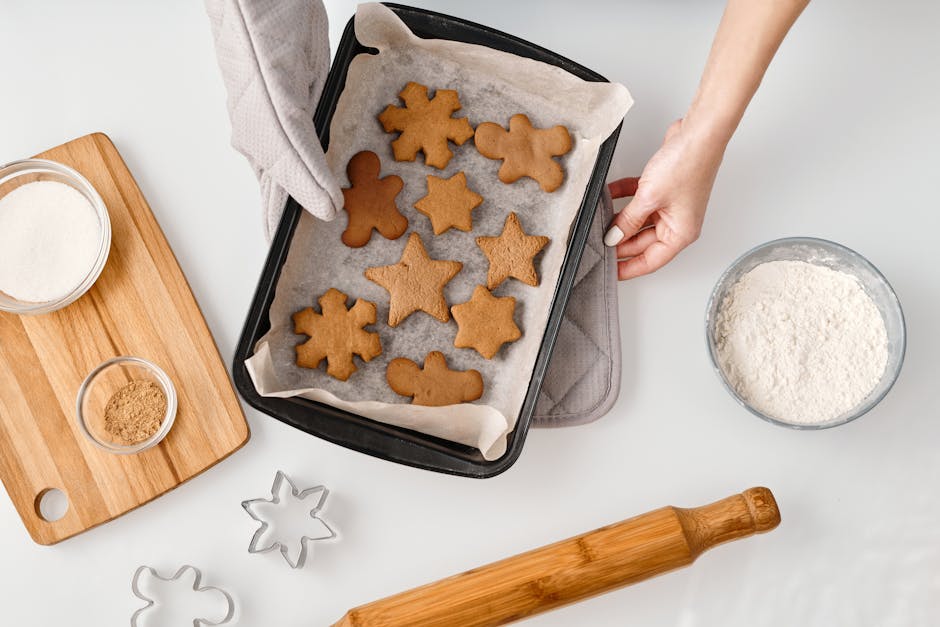The Time Traveler's Cookbook: Relive Historical Dishes Today!
Have you ever wondered what it was like to eat a meal fit for a Roman emperor or savor a delicacy straight from the Viking table? With "The Time Traveler's Cookbook," you can dive into the rich tapestry of culinary history and recreate iconic dishes that have tantalized taste buds throughout the centuries. This exploration not only reignites the flavors from distinct eras but also connects us deeper to the cultural moments that shaped our eating habits. Join us as we embark on a tasty journey through time, where history and food intertwine beautifully, and learn how to bring these age-old recipes into your modern kitchen!
Unearthing Culinary Time Capsules: The Historical Context
Understanding the history of food is like peeling back layers of an onion—each layer reveals more about the people, traditions, and environments of different eras. From the ancient civilizations of Mesopotamia and Egypt to the bustling street markets of medieval Europe, each region and time period has left an indelible mark on our culinary practices. Historical recipes not only serve as snapshots of daily life but also reflect the available ingredients, cooking techniques, and social customs of the time.
When we delve into historical cooking, it's important to recognize the role that societal changes played in shaping our diets. The discovery of spices from the East dramatically altered European cuisines and paved the way for intricate flavor combinations. As we discuss certain dishes in this article, I'll recommend a few resources for further reading—don't miss out on Culinary Cartography for an engaging look at historical influences on modern dishes!
Daring Dishes: Recipes to Revive from Different Eras
Ancient Egypt: The Bread and Beer of the Nile
Imagine a bustling market along the Nile, where bakers dust their flour-covered hands and merchants offer jugs of freshly brewed beer. In ancient Egypt, bread and beer were staple foods. Recreating this history starts with basic flatbread paired with a beer inspired by the Egyptians.
Recipe: Egyptian Flatbread - Ingredients: Whole wheat flour, water, salt. - Instructions: Mix flour and salt in a bowl, gradually adding water until a dough forms. Knead until smooth. Roll into flat rounds and cook on a hot griddle until puffed and lightly browned. This simple yet delicious bread provides insight into one of history’s fundamental staples.
And for a more elaborate twist, check out the transformative ideas in Culinary Alchemy.
The Roman Banquet: A Luxurious Spread
Fast forward to the Roman Empire, where feasting was an art form. Wealthy Romans indulged in elaborate multi-course meals featuring delicacies like stuffed dormouse and honeyed wine. Today, we can reconstruct a modernized banquet, using accessible ingredients while retaining that Roman essence.
Recipe: Honeyed Wine (Mulled) - Ingredients: Red wine, honey, cloves, cinnamon sticks, orange slices. - Instructions: In a saucepan, combine all ingredients and heat gently, allowing the flavors to meld without boiling. Enjoy this aromatic drink while imagining the opulence of a Roman feast.
Medieval Feasts: A Journey to the Dark Ages
Traveling further into history, we land in medieval Europe. Here, feasting was often extravagant, featuring dishes such as pottage, roasted meats, and pies. The use of spices was prevalent, influenced by trade routes and cultural exchanges.
Recipe: Medieval Pottage - Ingredients: Barley, vegetables (carrots, leeks), herbs (sage, thyme). - Instructions: Cook barley in water, then add chopped vegetables and herbs to simmer until tender. This hearty meal connects us with the consuming philosophies of sustenance and community that defined the era.
The Renaissance Table: Innovations and Flourishes

Entering the Renaissance, food preparation itself became a form of art. The introduction of new ingredients such as potatoes and tomatoes from the Americas changed European cuisines profoundly. We could learn much about the period's evolving cooking styles through the various dishes created during this time.
Recipe: Tomato and Basil Bruschetta - Ingredients: Fresh bread, ripe tomatoes, garlic, fresh basil, olive oil. - Instructions: Toast sliced bread, then top with a mixture of chopped tomatoes, minced garlic, olive oil, and basil. This dish elegantly displays the Renaissance’s impact on flavor and presentation.
Modern Twists on Historical Dishes

Bringing historical meals into the modern era allows us not only to savor their flavors but also to appreciate the evolution of our culinary arts. Remember, embracing the past doesn’t require strict adherence to ancient techniques. By integrating modern methods and ingredients while respecting traditional flavors, we're able to innovate further. You can find useful insights about unique cooking expressions in articles like Sound of Cooking.
A Fusion of Time: Culinary Creativity in the Kitchen

Think about experimenting with historical recipes blended with cultural flavors of today. Culinary time-travel offers a unique canvas, so don’t hesitate to incorporate ingredients that resonate with your palate. Enrich a historical dish with contemporary elements by adding a dash of international spice or a new cooking technique.
For instance, a Renaissance-inspired dish of stuffed eggplant could benefit from Moroccan spices, creating a delightful blend between two cultures while keeping one foot in the history books. This approach to cooking brings a fresh perspective to age-old dishes!
Interactive Cooking: Experience Flavors in New Ways

To truly bring historical cooking to life, consider parallel experiences like thematic dinners or cooking classes focused on different eras. Engage with others in your community to host gatherings that focus on historical cuisines, complete with storytelling and atmosphere.
By embracing the sensory experiences of food—sight, sound, touch, smell—cooking can transform into an exciting adventure. Discover how you can add depth to your cooking journey by exploring topics like Flavor Futures for a modern twist on historical dishes.
Final Thoughts: Embrace the Journey of Cooking
Cooking historical dishes offers a unique opportunity not just to recreate the past but to engage meaningfully with history itself. The connections forged through shared meals open a window into different times and cultures, allowing us to appreciate our culinary heritage more deeply.
As you explore these historical recipes and beyond, allow your palate to wander. Experiment with creating a dish that holds significance to you or perhaps resonates with your family history. Whether you’re inspired by ancient grains, medieval methods, or Renaissance flavors, remember that the kitchen itself is a time machine, waiting to transport your taste buds through history.
So gather your ingredients, pull together your spice rack, and embark on a full-course historical dining experience right in your own home. Who knew that history could be so delicious?








